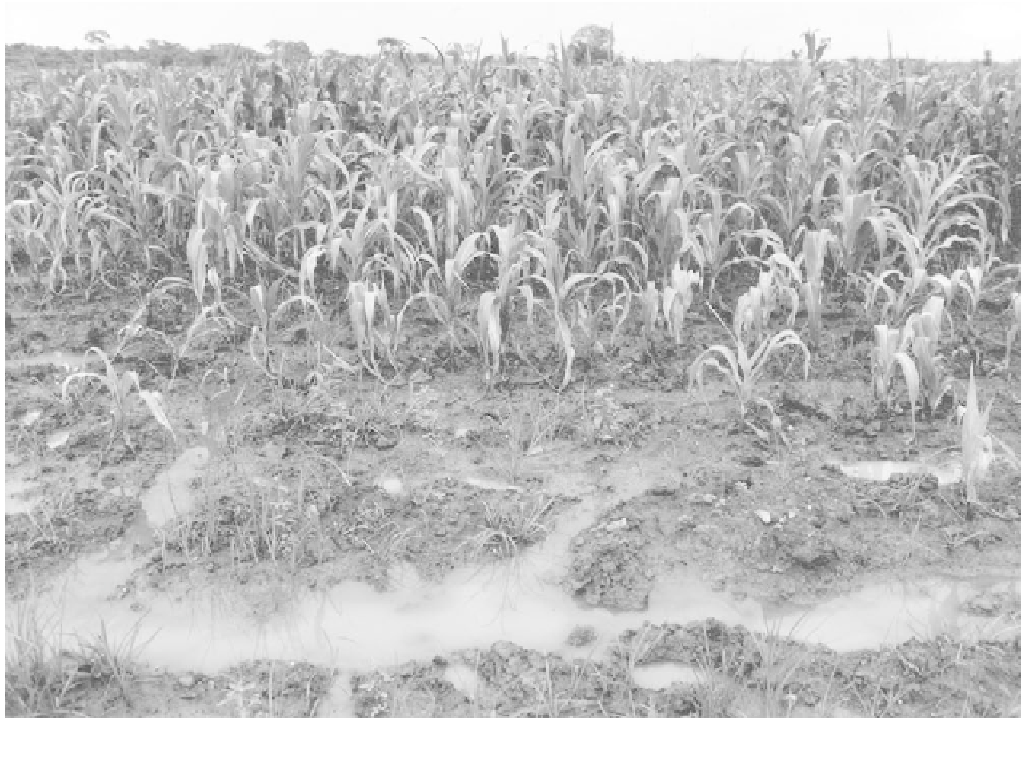Agriculture Reference
In-Depth Information
FIGURE 9.3
Corn damaged by waterlogging in Tabasco, Mexico.
Excess soil moisture creates conditions that can stunt or even
kill a crop.
be one-thousandth or less of what it is in well-aerated soil.
Lack of O
2
can severely limit the respiration of root cells,
allow populations of anaerobic microorganisms to build up,
and establish chemically reducing conditions (Figure 9.3).
The depressed rates of gas exchange in waterlogged
soils also allow the buildup of CO
2
and other gases.
CO
2
accumulates wherever respiration occurs such as in
the area of the roots, displacing needed oxygen and
limiting many metabolic processes. Other gases begin to
accumulate under the same conditions; for example,
methane and ethylene can increase to toxic levels as a
result of anaerobic breakdown of organic matter. Phyto-
toxic water-soluble breakdown products of anaerobic
organic matter decomposition also accumulate, a prob-
lem that has been noted even for rice production systems
(Chou, 1990).
Under conditions of limited O2 supply, many soil
microorganisms make use of electron acceptors other
than oxygen for their respiratory oxidations. As a result,
numerous compounds are converted into a state of
chemical reduction, where oxygen is lost and hydrogen
is gained. This in turn leads to imbalance in the oxidation-
reduction (redox) potential of the soil, measured as
the electrical potential of the soil to receive or supply
electrons. Ferrous and manganous ions (rather than ferric
or manganic) build up to toxic levels under reducing
conditions.
Some anaerobic-tolerant microorganisms that can use
nitrate as an oxygen source for respiration cause denitri-
fication by liberating N
2
gas or toxic levels of nitrous oxide
(N
2
O). Ammonia, too, can build up after flooding, but this
is due more to the anaerobic breakdown of organic matter.
In addition, anaerobic activity reduces sulfates to phyto-
toxic soluble sulfides, producing the familiar rotten-egg
hydrogen sulfide (H
2
S) smell.
Each of the conditions described above can become
limiting for plant development, either alone or in some
combination. When a plant is weakened by these condi-
tions, it becomes more susceptible to diseases, especially
in the root zone. The timing of flooding is also important.
The susceptibility of a crop to negative effects from excess
soil water conditions may depend on what stage of devel-
opment the crop is in when the waterlogging occurs. The
data in Figure 9.4 illustrate how waterlogging can affect
crop growth, development, and yields in different ways,
depending on the timing of the waterlogging.

Search WWH ::

Custom Search